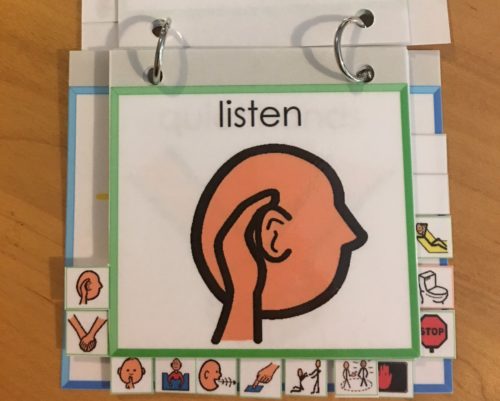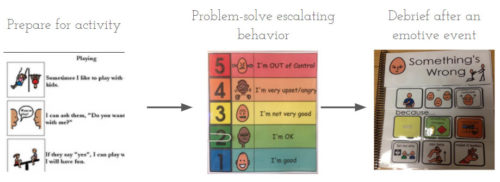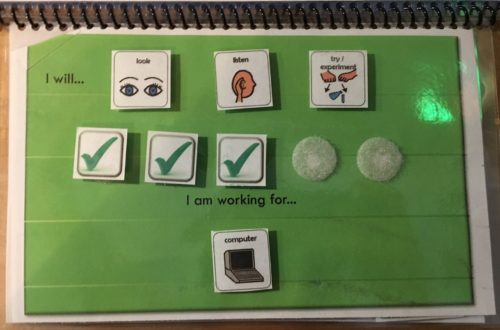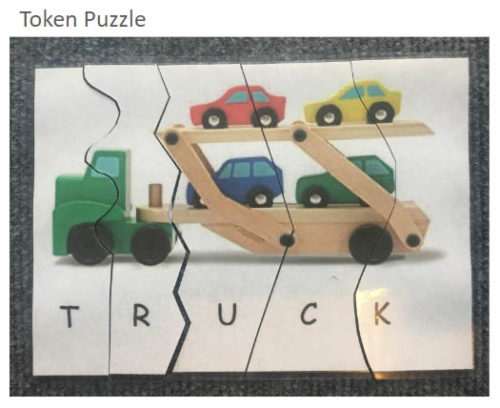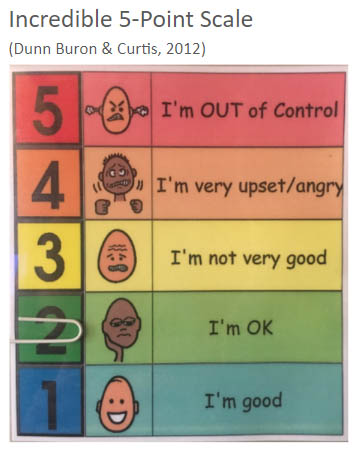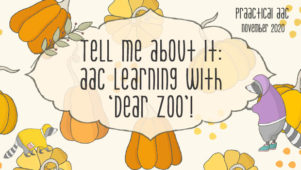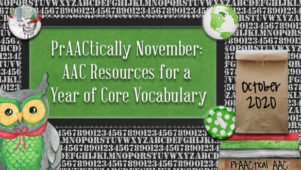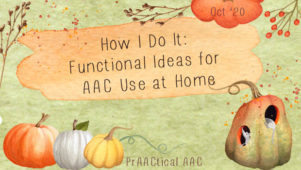PrAACtically Visual: Supports for Self-regulation & Understanding Expectations
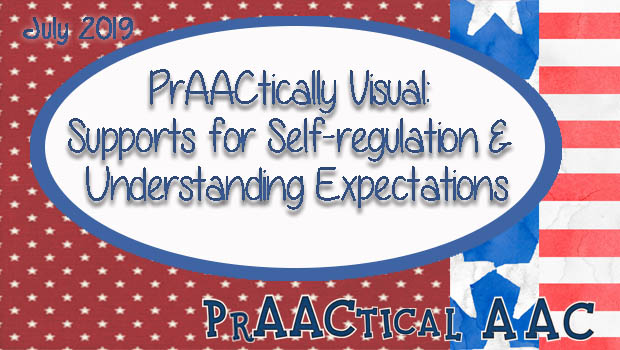

Looking to up your game in creating and using visual supports in your AAC work? Sit tight because the post below has plenty of information and downloadable files to help you out. Today, AAC SLP Tabi Jones-Wohleber is back to continue her series, this time focusing on supports for self-regulation and comprehending expectations for different situations. Tabi has worked in schools and early intervention supporting families, professionals, and individuals with AAC needs in West Virginia and Maryland. Tabi’s prAACtical approach to supporting AAC professionals has enriched the work of many of our readers.
If you missed the initial segments in the series, you can get those here.
Visual and Environmental Supports for Self-regulation & Understanding Expectations
I hold the position that all behavior is communication. Attending to what an individual is attempting to communicate through behavior provides insight into why the behavior is occurring. And to be clear, this is true of both desirable and undesirable behaviors. Consider how you react when a child makes eye-contact and gestures for you to look, or smiles and leans into a book you are reading together. In such instances you respond to the intent, and join in, or engage with the book, thereby sustaining and enriching the interaction. But if a child runs away, throws the book or demonstrates other challenging behaviors, reactions are often punitive rather than responsive to the intent of the behavior. The child may be expressing I’m scared, I don’t want to, I don’t feel safe, I want to do something different, or I want someone different. It’s really all about the why. So, this post may be all about visual supports for behavior, but because the word “behavior” often suggests compliance, I want to state from the beginning that the tools explored here, when appropriately implemented, are not about compliance. Putting visual schedules in place is a first step in helping individuals gain a sense of control and understanding over their time and tasks which may mitigate some behaviors related to self-regulation and understanding expectations. But for many, more is needed. I find it helpful to consider such tools as a continuum of supports. They scaffold individuals’ understanding and awareness of their actions and offer a concrete means for processing expectations, and learning self-regulation skills related to those actions. I think of tools as falling into the following continuum of supports from preventative through follow-up:
- Cue Desired Behaviors: Review and Post rules/expectations, Super Symbols (template below), Social Stories, Video Modeling
- Reinforce Desired Behaviors: Token tools-token board, token counter, token puzzle (templates below)
- Self-Monitor Emotional State: Incredible 5-Point Scale (Dunn Buron, & Curtis, 2012), Zones of Regulation
- Calm Down / Reflection / Problem-Solving Tools (tangible means to discuss feelings and/or actions related to before, during or after and emotive event): Flexible social script such as Something’s Wrong (template below), Calm Down kits, etc.
*NOTE: at the height of an emotive event or challenging behavior, an individual is not likely available to engage with tools intended to support self-regulation.
One of the powerful impacts of a continuum of tools is that it provides supporting adults a consistent and purposeful way to respond to individuals to help them understand how they feel, what may have happened, why, and in conjunction with their AAC system, provide language to talk more about it. The consistency of such feedback, as well as the multimodal input of a visual or manipulative tool helps to build these necessary understandings.
IMPLEMENTATION STRATEGIES:
Use in natural contexts. Reference behaviors, feelings, and interactions of and between others by labeling and describing them when they occur, such as in books or movies, or other natural exchanges.
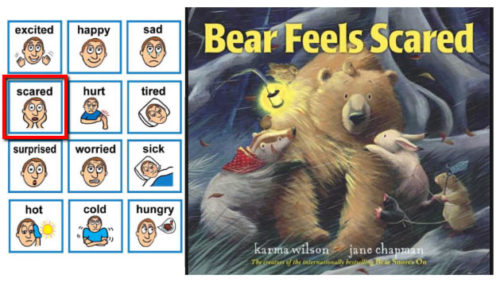
Embed in routines. Teach skills related to behavioral expectations, provide opportunities to build self-awareness, and utilize tools that provide a systematic structure for working through difficult behaviors. When language is abstract, the concreteness of these tools facilitates understanding. Reference these tools routinely to help individuals internalize their purpose and process. Click here or on the image below to download the files for this visual support.
Be Responsive. Customize tools (either schedules or self-regulation tools….as they are so interrelated), as needed to ensure they are accessible, manageable and address the intended purpose.
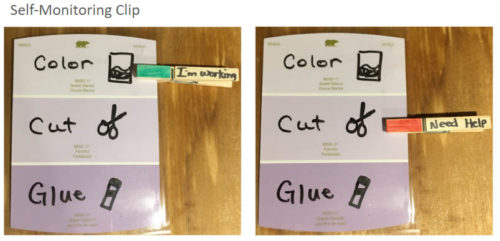

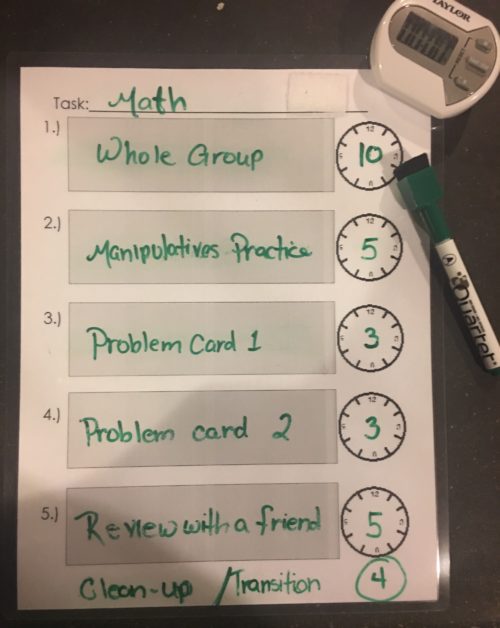
Foster Independence. Scaffold support so individuals can gain ownership of their tools, and ultimately their actions. For those that require it, token boards and self-regulation scales provide a means to monitor and describe one’s actions. The Incredible 5-point scale is especially flexible for defining a wide range of social and emotional behaviors and expectations. Without ownership of these tools, such skills cannot be developed, and passive compliance, power struggles, or challenging behaviors can result.
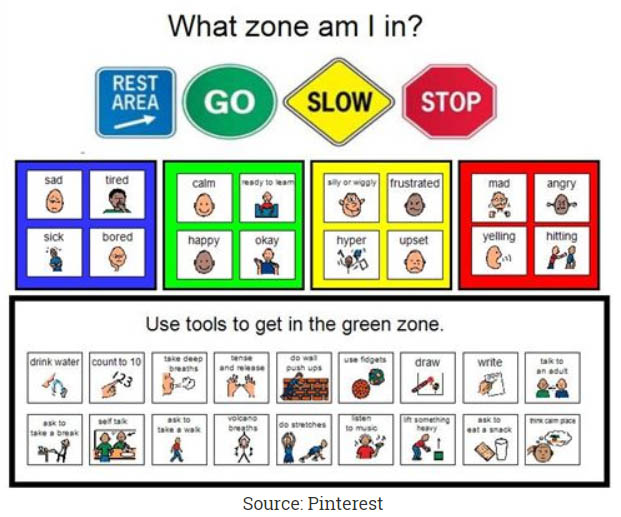
ACCESSIBLE BY DESIGN
Interactive, but NOT distracting. Modes of interaction may include dropping tokens in a cup, marking checks with dry-erase, or arranging and moving symbols with Velcro®. Combinations of these may be used together. The careful balance to strike is determining the interaction mode that highlights the focus of the tool and does not cause unnecessary distraction.
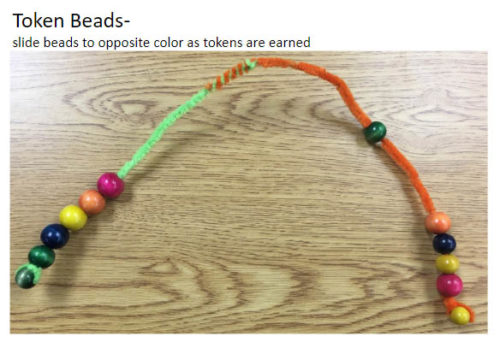

Multi-modal. Determine if these tools will live in a designated location for storage and use (on a classroom wall) or if portability is an essential feature. For some individuals, ample effort makes a tool more engaging, while others prefer minimal effort. For instance, a self-monitoring clip may be a paperclip (easy to slide), a clothespin (moderate effort), or a binder clip (considerable effort). The differences in effort may benefit students with varying needs of sensory input. The options are endless.
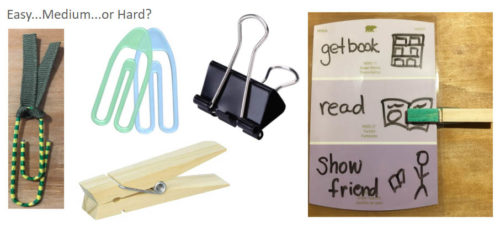
Clear purpose & process. Use labels to identify the purpose and movement of symbols so anyone who interacts with the individual can use it without the need for a tutorial. For token boards, it is especially important to define how the individual will earn tokens, as it does not achieve its intended purpose of facilitating awareness of one’s actions and self-regulation if tokens are earned at the whim of supporting staff or caregivers. It also ensures everyone who supports an individual (despite the perennial challenge of staff changes across environments) understands how the tools works.
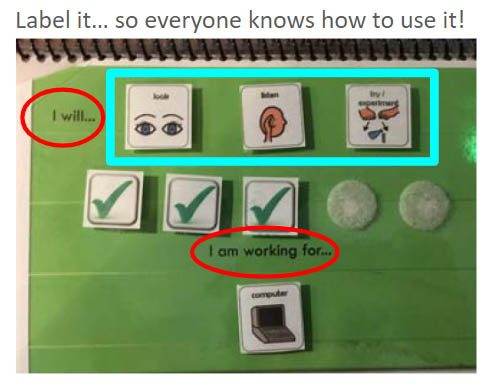
Keep it simple. Embrace readily available or easily accessible materials and engineer with only as much support is needed. Portable white boards, post-its and paint chips can be used in so many ways.
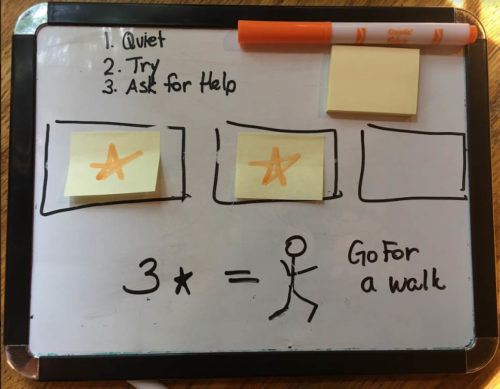
You can download the full set of visual supports from this post here. If you’re finding this series to be useful, mark your calendars to stop by next week for Part 4 in this series.
To learn more from Tabi, see the links below.
- 11-part AAC Partner Training Series (with downloadable slides, handouts, video suggestions, hands-on activities, etc.)
- Thoughts on Systems Change in AAC
- All-in-One Visual Support tool (with downloadable files)
- Multilingualism & Diversity in AAC
- Classroom CORE Book (with downloadable files)
Filed under: Featured Posts, PrAACtical Thinking
Tagged With: downloads, Tabi Jones-Wohleber, visual supports
This post was written by Carole Zangari
